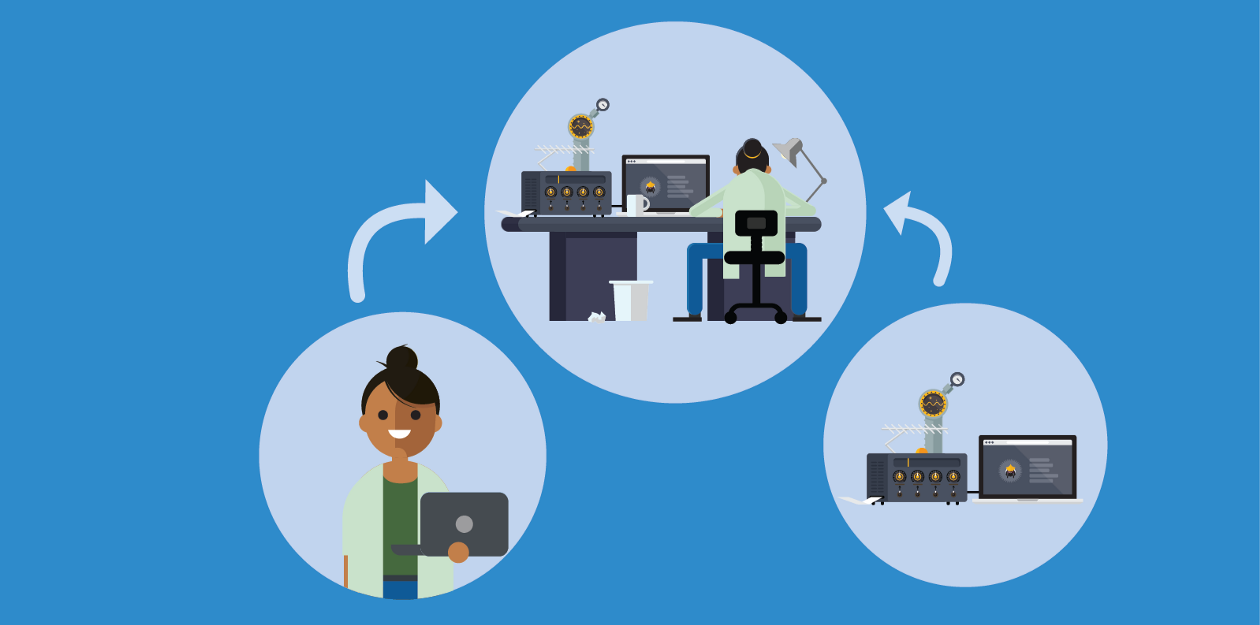In Spring Valley, Illinois, St. Margaret’s Health achieved a somber distinction in 2023 when it became the first known hospital to close its doors due to a ransomware attack. This disrupted its ability to process insurance claims for months, resulting in a fatal financial crisis.
Such cyberattacks, affecting an average of 300 U.S. healthcare facilities annually since 2020, underscore the urgent need for rigorous cybersecurity. As cyberattacks grow in sophistication, organizations that adopt a mindset of continuous improvement in their security practices are the ones that will continue to thrive.
This event serves as a chilling reminder that cybersecurity can't be an afterthought in digital innovation. It demands a proactive, continuous, and robust approach. What was secure yesterday might not necessarily be secure today.
Thus, continuous security testing represents more than just a practice; it's a vital philosophy in a world where threats evolve by the minute.
That's where continuous security testing comes into play.
Rather than waiting for an incident to react, businesses are now integrating security protocols right into the fabric of their software development life cycle (SDLC) to detect, address, and mitigate vulnerabilities before they can be exploited. With the advent of cloud computing and decentralized digital infrastructure, the attack surface has expanded. This amplifies the need for continuous monitoring and assessment of vulnerabilities.
Below, we'll explore the forms of continuous security testing as well as its indispensable role in today's tech-driven world and the tools that make it possible.
What Is Security Testing?
Security testing is designed to identify vulnerabilities, threats, and risks in a software application. The goal is to ensure software remains impervious to malicious attacks.
Testing examines the software's infrastructure, applications, and endpoints to detect potential weaknesses that could be exploited by threat actors. Failing to rigorously test and rectify software vulnerabilities can leave an open door for attackers to access sensitive data, disrupt operations, or even command systems for malicious intents.
The Software Development Life Cycle (SDLC) represents the stages of software creation, from conceptualization to deployment. Historically, security measures were often tacked on toward the end of this cycle—typically in the testing or deployment phases. However, this reactive approach often proved to be too little, too late.
Today, with the recognition of how integral security is to any software system, security testing has been integrated into every phase of the SDLC.
This means that even during the initial design and development stages, security considerations are front and center. A significant advantage of continuous security testing is its ability to keep pace with frequent software updates, ensuring that every new feature or modification is assessed for vulnerabilities before deployment.
In other words, the key is embedding security practices from the outset by default, whether it's in coding standards, architectural decisions, or data handling procedures.
Only then can organizations ensure that their software is built on a foundation that prioritizes safety from cyber threats.
Types of Security Testing
Each type of security testing offers a unique approach to identifying and addressing potential vulnerabilities. By focusing on continuous security testing, organizations can maintain an ongoing understanding of their security posture, allowing them to make informed decisions and prioritize resources most effectively.
Security Audits
Security audits involve comprehensive evaluations of systems or processes to ensure compliance with predefined security standards.
For instance, the Payment Card Industry Data Security Standard (PCI DSS) mandates regular security audits for organizations handling credit card transactions to protect customer data.
These audits are closely tied to industry regulations. Non-compliance often leads to penalties or, in severe cases, business operation suspension.
Threat Modeling and Risk Assessment
The goal of threat modeling is to systematically identify and evaluate vulnerabilities in digital systems.
This proactive method allows companies to better allocate resources to the highest-priority threats in order to enhance their response to security incidents and stay compliant with industry-specific regulations.
Microsoft's STRIDE (Spoofing, Tampering, Repudiation, Information Disclosure, Denial of Service, and Elevation of Privilege) checklist is a well-known threat modeling technique. Others, such as PASTA, a risk-centric methodology, and OCTAVE, which emphasizes an organization's operational perspective, are equally valuable. These methodologies guide organizations in classifying threats and envisioning attack scenarios.
Once threats are pinpointed, risk assessment aids in prioritizing them based on their potential damage and likelihood, ensuring resources are funneled toward tackling the most imminent threats.
Vulnerability Scanning
Vulnerability scanning involves automated tools, such as Nessus or OpenVAS, to scan systems for known security flaws. By regularly scheduling and conducting these scans, organizations can ensure that they address detected vulnerabilities promptly.
Effective scanning relies on a vulnerability database that's entirely up-to-date in order to catch the newest security risks effectively.
Penetration Testing
Penetration testing, often termed "pentesting," is a systematic process where security experts manually and deliberately target an organization's systems in an attempt to identify and exploit vulnerabilities. By imitating genuine attacks, pentesters gauge how strong an organization's defenses really are as well as assess the potential implications of successful breaches.
This method provides organizations with a clear picture of their security vulnerabilities, allowing for informed decisions on mitigation and resource allocation. Because pentesting involves a simulated breach, it gives businesses firsthand insights into potential real-world attack scenarios.
Application Security Testing (AST)
Application security testing, abbreviated as AST, zeroes in on vulnerabilities present in software applications. There are two primary approaches:
- SAST (Static Application Security Testing): A non-runtime method, SAST goes deep into the software's source code, looking for potential security threats. Popular tools for this analysis include Checkmarx and Fortify.
- DAST (Dynamic Application Security Testing): Unlike SAST, DAST operates in real-time, probing running applications for vulnerabilities. Tools frequently used for DAST include OWASP ZAP and Burp Suite.
Configuration Scanning
Proper system configuration is crucial for security. Configuration scanning goes beyond merely checking if systems are set up correctly. It scrutinizes firewall rules, examines password policies, verifies encryption settings, and more, spanning from servers to databases.
Misconfigurations can be lethal. For example, in 2017, an Amazon S3 misconfiguration exposed classified U.S. Army intelligence data, underscoring the criticality of proper configuration.
Vulnerability Management
Vulnerability management is an ongoing endeavor, adjusting to ever-evolving threat vectors as well as prioritizing risks to ensure resources are allocated to address the most critical threats first.
Even with vulnerability scanning or pentesting to identify vulnerabilities, it’s important for companies to manage their vulnerabilities to ensure the most dangerous ones are remediated and properly balanced against engineering resources.
Why Is Continuous Security Testing Important?
The rapid pace of software development today means that waiting for scheduled, periodic security tests may leave systems exposed to threats for too long.
As businesses diversify their tech stacks, incorporating a variety of platforms and tools, continuous security testing ensures that no component becomes a weak link.
Organizations used to set aside specific times for security assessments, often during the final stages before release. But this method is clearly outdated. Continuous security assessments mean real-time identification and action on vulnerabilities to drastically reduce the window of exposure.
CI/CD (Continuous Integration/Continuous Deployment) refers to the practices of integrating code changes frequently and ensuring that the software can be reliably released at any time. It's primarily about automating the software release process, from the integration of new code changes to deploying those changes to production environments.
Continuous Integration (CI) involves merging code changes frequently, ideally multiple times a day, and then automatically testing these changes to catch bugs early. Continuous Deployment (CD) is the practice of automatically deploying every code change that passes the automated tests into a production environment without manual intervention.
The CI/CD (Continuous Integration/Continuous Deployment) process is about automating the software development lifecycle. Integrating security practices into CI/CD means that as developers write and commit code, it's automatically checked for security issues to ensure that every code update meets security standards.
Tools for Continuous Security Testing
An organization looking to fortify its cybersecurity posture needs to leverage specialized tools that both ensure comprehensive evaluations and adapt to the dynamic threat landscape.
While Application Security Testing (AST) focuses on software vulnerabilities using techniques like SAST and DAST, continuous security testing extends its gaze further:
- Network Monitoring: Tools like Wireshark, a packet analyzer, offer real-time network traffic inspection. This hands-on approach helps pinpoint potential threats at the network level.
- Network Exploration: Nmap serves as a versatile tool for network discovery and security auditing. It can identify network devices and their open ports, which is crucial for understanding potential vulnerabilities.
Key considerations when selecting continuous security testing tools include:
- Integration Capabilities: Prioritize tools that meld effortlessly into existing DevOps and CI/CD workflows, ensuring smooth operations.
- Frequent Updates: With evolving cyber threats, tools need periodic updates. Such enhancements keep them prepared for the latest vulnerabilities.
- Scalability: As an organization's operations grow, its security tools should keep pace. Scalability ensures that tools remain effective even as operational demands increase.
The Imperative of Continuous Vigilance
Businesses, now more than ever, need to view security not as a periodic checkpoint but as an integral and continuous component of their operations. Adopting a proactive security stance ensures not only the protection of vital data and assets but also preserves brand reputation and trust among stakeholders.
Looking forward, the integration of agile methodologies in security testing represents a synthesis of speed and safety. For businesses aiming to stay agile while maintaining strong security, services like Agile Pentesting by Cobalt are at the forefront, offering a tailored approach to security that meets the demands of the modern digital enterprise.
For businesses aiming to stay agile while maintaining strong security, services like Agile Pentesting by Cobalt offer an ideal solution.


















.png)
